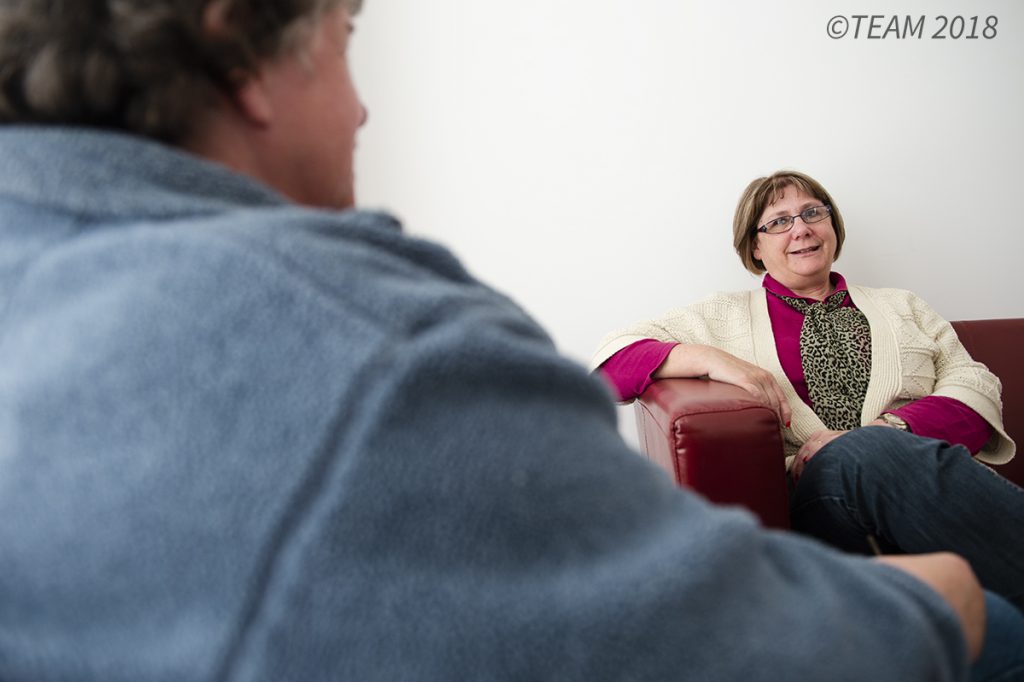
Sending Churches
Creating a Missionary Care Plan
January 24, 2019
by Anna Price

Working at TEAM, the number one question I get from local churches is, “How do we take better care of our missionaries?”
As a missions agency, TEAM provides proactive care for the ups and downs of missionary life. But most churches understand that they can offer something an agency simply can’t provide.
As one missionary shared with me during a training session, “Sometimes you just need someone to make a casserole and eat it at the table with you.” This “casserole care” belongs to the community who has discipled and walked alongside the missionary long before they were sent with TEAM — the local church.
So what do I tell churches when they ask about missionary care? It begins with intentionality.
Intentionality is Key
Churches are often busy with programs, volunteer opportunities, small groups and more — which often leaves missionary care out of sight and out of mind.
To fight for missionary care is to fight for intentionally. By intentionally keeping missionaries and opportunities to serve them in front of your church, you affirm both the missionary’s sacrifice and the joy of joining God in His global story.
Great missionary care doesn’t just happen on its own. Churches that take great care of their missionaries typically create a missionary care plan. To some, this may sound forced or inauthentic. However, we have seen missionary care plans allow churches to provide consistent and proactive care to their sent ones around the world.
The great news? You don’t have to have a large staff or budget to create a missionary care plan. Instead, we recommend using this process to identify two or three things your church can implement in your missionary care strategy this year.

From care packages to counseling services, the first step to caring for a missionary well is working to understand what they go through.
Create a Missionary Lifecycle
Missionary life and needs can look different depending on where and how someone serves. But there are specific life events most every missionary faces, such as applying to go overseas, fundraising, a first home assignment and retiring.
As a church missions team, create a list of the important life events someone at your church faces. Next, brainstorm some transitions that are specific to missionaries (i.e. team members leaving the field, or home assignment).
Or (cheat code) download this free guide that outlines critical events in the missionary lifecycle.
As a team, research what support and encouragement missionaries could use during that particular season. Share your list with your missionaries and their agencies and ask what they recommend as well.
Your list may seem overwhelming at first, but it is definitely okay to start slow! Pick two or three transitions where you want to serve your missionaries better this year. Assign a point person from your team to carry the torch for that specific transition.
For instance, one church may realize they aren’t intentionally connecting with missionaries when they come to town on home assignment. After brainstorming, the missions team decides they will take home assignment missionaries to lunch in order to build relationship and hear about their work. They assign one member to coordinate with the missionaries to schedule the lunches.
Now, next time the team sees a missionary is coming home on home assignment, the missions team understands the need for meeting together and has a plan to do so!

When every ministry and department gets involved, even small churches can show their missionaries deep love.
Involve the Whole Church
Thankfully, missionary care doesn’t depend solely on one staff member or missions team. Every department of your church can be involved in missionary care, from preschool to senior adults.
I often encourage mission teams to write down every department or ministry in their church they can think of. Even smaller churches easily have 10 or more different ministries.
After listing the different ministries, brainstorm ways that ministry can connect with missionaries. For example, kids can draw pictures to send to missionaries, while women’s Bible studies can share the book they are studying that semester.
If every ministry in your church picked one way to encourage your missionary, chances are missionaries would hear from your church several times a year — possibly even once a month!
Your plan doesn’t have to be complex or flashy to let your missionaries know you care. Intentionally connecting with them about their personal and professional lives not only encourages those your church has sent, but also reminds them they remain an important part of your congregation.
Get started on your missionary care strategy today with this free download! It will guide you through the life stages every missionary faces, so you can give them the best care possible.
Related articles


